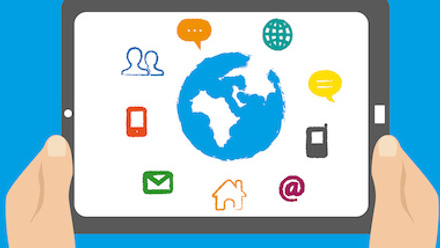Three steps to helping employees throughout 2021

Uncertainty is unsettling and we’ve had a year’s worth of it, with Covid-19 taking its toll in more ways than one. Working from home, being furloughed, trying to cope on reduced income, threat of job loss, long-Covid, bereavement and social isolation have all created a perfect storm for deterioration in the mental health of the UK workforce. The fact that the government has seen the need to publish a winter mental health plan, which recognises the role that the workplace can play, really brings home the expectation that employers are well placed to help their people through this difficult time and beyond.
Following the three steps will enable employers to support their people throughout 2021, no matter what uncertainty that brings.
1. Understand what you have in place
This sounds obvious doesn’t it, but it may not be. If you’ve spent budget specifically on a service for your employees (say, discount vouchers), you’ll generally know what you’ve bought and how to get your people to use it. However, it’s not always so well known that some insurance products come with extra help and support services that can be used every day by staff, line managers, HR and business owners alike, even if a claim is never made.
Things like access to an employee assistance programme (EAP), fast access to counselling and virtual GP services (and much more) can be found within group risk benefits (employer-sponsored life assurance, income protection and critical illness), private medical insurance, cash plans and sometimes, employer liability products.
In 2019, there were nearly 75,000 interactions with the embedded services that group risk providers make available, according to our claims survey. And we’re expecting this number to have increased significantly during 2020.
Virtual GP services have been heavily utilised throughout the pandemic, especially during the first lockdown, and EAPs too have come into their own, and this will continue into the future as mental health support is likely to become one of the most essential elements of the employee benefits package.
Other online services and apps aimed at encouraging better health behaviours and improving fitness have also been heavily used during the pandemic, as people have had to take a different approach to accessing health and wellbeing services. Again, employers will find these wrapped into group risk and healthcare products and may even find that increased usage will impact positively on the cost of their insurance.
2. Get the message out there
People can’t use what they don’t know about. Our research shows a real disparity between how much HRs think employees know about and understand their benefits, and how this pans out in practice. For example, when asked what emotional or practical support they offered to employees, 42% of businesses said that they offered emotional support, such as counselling. However, when employees were asked what support they believe their employer might offer them, only 7% of employees thought they’d be given access to counselling, which shows a clear opportunity for employers to improve their communications so that help is front of mind when it’s needed.
3. Measure, measure and measure again
Monitoring ongoing usage is key to understanding the issues employees are facing and thus key to measuring the effectiveness of both the support package and how it’s communicated.
However, as well as providing usage rates (the higher the better as it demonstrates that employees both know how to access help and are doing so), EAP providers will provide generic usage reporting so employers can see the categories of enquiries made (such as divorce, work-related stress, financial difficulties, housing difficulties and so on). This is incredibly useful for picking out common themes where more help might be needed/appreciated across the board or where risk might be managed better.
We’re seeing that employers have valued the supportive nature of group risk protection benefits throughout the pandemic, and they’ve worked with advisers and providers in order to maintain their provision.
Perhaps I could venture a small prediction after all, in that 2021 could see these oft unsung heroes of the benefits world treated less like a commodity and truly valued for the versatile offering that they are.
The author is Katharine Moxham, spokesperson for Group Risk Development (GRiD).






